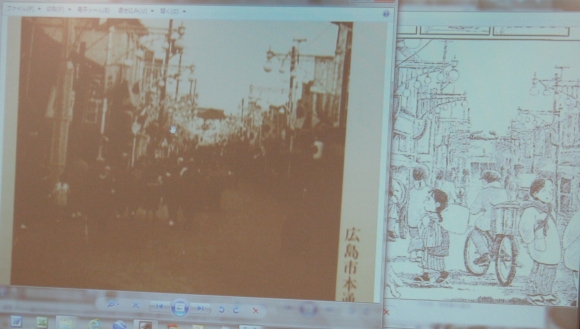Otakon 2014: Katabuchi blurs reality and fiction through teary eyes and tireless effort
We speak with the director of <cite>Mai Mai Miracle</cite>, <cite>Black Lagoon</cite>, and <cite>In This Corner of the World</cite>

Many heartfelt thanks are due to those responsible for coordinating Mr. Katabuchi’s appearance, the translator for his efforts, and, of course, Mr. Katabuchi himself. The transcriptions that follow, while lengthy, hopefully relay what made me transition from being a fan of Katabuchi’s work to admiring the man himself, and inspire the same feeling of awe for any who read on.
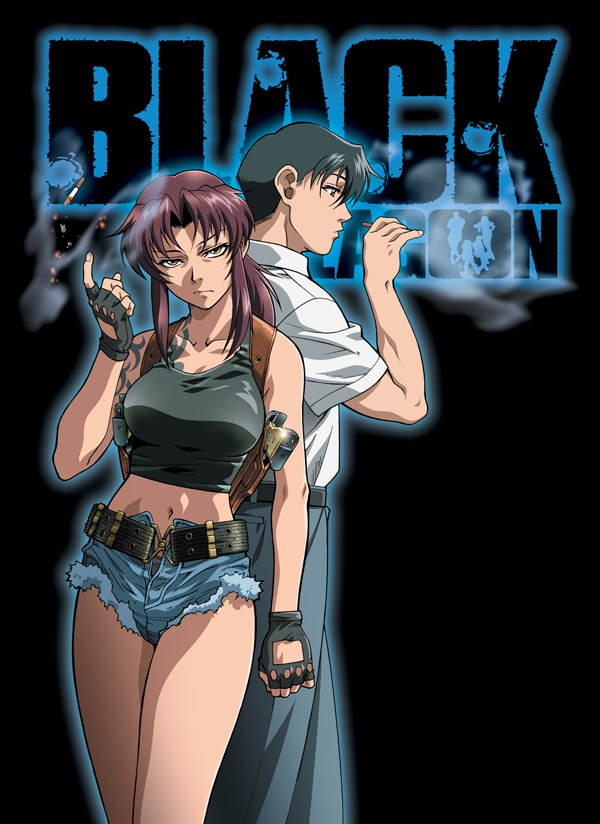 Katabuchi Q&A #1
Katabuchi Q&A #1
This is my first time at Otakon. I’ve actually been to several American anime conventions, but it’s my first time coming to Otakon. Normally I come with titles such as Black Lagoon, but this time I’m actually working on a new film and would like to share a little bit of the film with you guys before it’s even released.
So who watched Black Lagoon here? I think that’s a more popular series in the States, but who had the chance to watch Mai Mai Miracle or participated in the Kickstarter campaign? Mai Mai Miracle opened in Japan in 2009, but everyone in Japan thought an American release wasn’t feasible. But 2,000 fans got together on Kickstarter and made it possible. Now an English (U.K.) company is releasing the DVD or Blu-ray, and Andrew, the producer of that project, is very happy. So the film should be ready later on this year or next year. But we do have a screening of Mai Mai Miracle today from 1:30 to 3:30 in Video Room 1. Right now, I’m working on the new poster for the Kickstarter campaign. So those of you who took part will get that poster.
I’m sure some of you are still waiting for the sequel to Black Lagoon, but I’ve actually already covered all of the manga that’s already out. So until we get a little bit more built up by the artist, Hiroe-san, I don’t think we’ll be able to make another season yet. What you see on screen is an actual Black Lagoon background—art we used in the TV series. There’s lots of production materials that I made from Black Lagoon, but unfortunately I didn’t bring them up this time. So I only have three pieces of art. When I left Madhouse, I left lots of materials there, and that’s wher they are still. So what you’re seeing now is something called a layout, and this is something used to diagram the whole animation sequence for that shot. For this layout, as well as most of these far shots (establishing shots) of the city or town, I tried to draw the entire thing myself. This is because I try to grasp the whole world first. From there, I start to go into the smaller sections. Of course, Black Lagoon was based on the original manga by Hiroe-san. But working with Hiroe-san for the animation, we tried to develop the city as based on Hong Kong and Vietnam (mainly), because it doesn’t exist in real life. These are some of the props used in Black Lagoon. For example, the prop design for the German U-boat that appeared in the series was only created via reference pictures. But when I went to Anime Central after Black Lagoon and saw the U-boat exhibit in Chicago, I realized, when I was in there, that we did a really good job depicting how the actual U-boat structure is. As soon as I stepped in, I knew exactly where all these things were.
So Maruyama and I left Madhouse, because it was bought out by a parent company and that changed their business style. And both of us believe that, at this new Madhouse, we wouldn’t be able to make the films that we would like to. So that’s why we left together. Then Maruyama started a new studio called MAPPA. And it’s funny; MAPPA has much more work than Madhouse now. Maruyama claims MAPPA stands for several things, but I’ll tell you why he really used that name. In Italian, MAPPA means map, but in Japanese, MAPPA means naked. Maruyama, who left Madhouse when he was 70 years old, felt that building a new company was like being reborn again—a completely naked baby. So that’s why he really named it MAPPA.
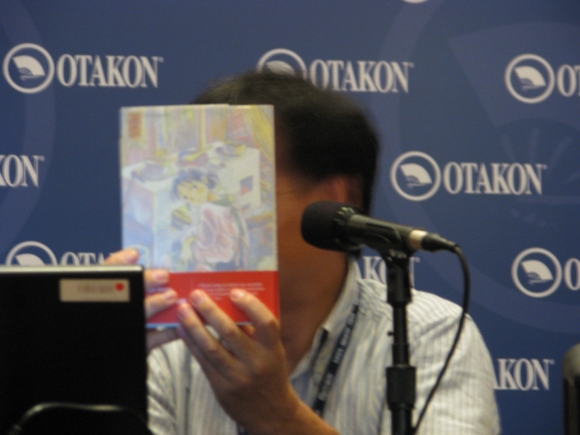
What was your biggest inspiration when making Mai Mai Miracle?
When I was at Madhouse, Maruta brought a book to me. It was about children’s life in the 1950s in an area called Yamaguchi Prefecture in the West side of Japan. Even though it was about people who would be older than me, I felt similarities with my childhood. That’s why I wanted to work on Mai Mai Miracle.
One of your staff credits is that you worked on the American cartoon of Street Fighter. First of all, is this true? And second: what was that experience? Was it substantially different making this cartoon for an American audience versus making anime for a Japanese audience?
That’s like a 20-year old series, right? It was so long ago, I can’t really remember it. But I think I did draw Chun-Li and the storyboard. I worked on several game-based animations. At the time, I realized that Japanese games were, going to be enjoyed worldwide, not only in Japan, so I did try to keep in mind that it was going to eventually make it out of Japan. I think I’m starting to remember that I did work on Street Fighter II, but at the time, I was only asked to do part of it. And I remember, at the time, I was thinking, “You know, you should really make me do all this instead of part of it.”
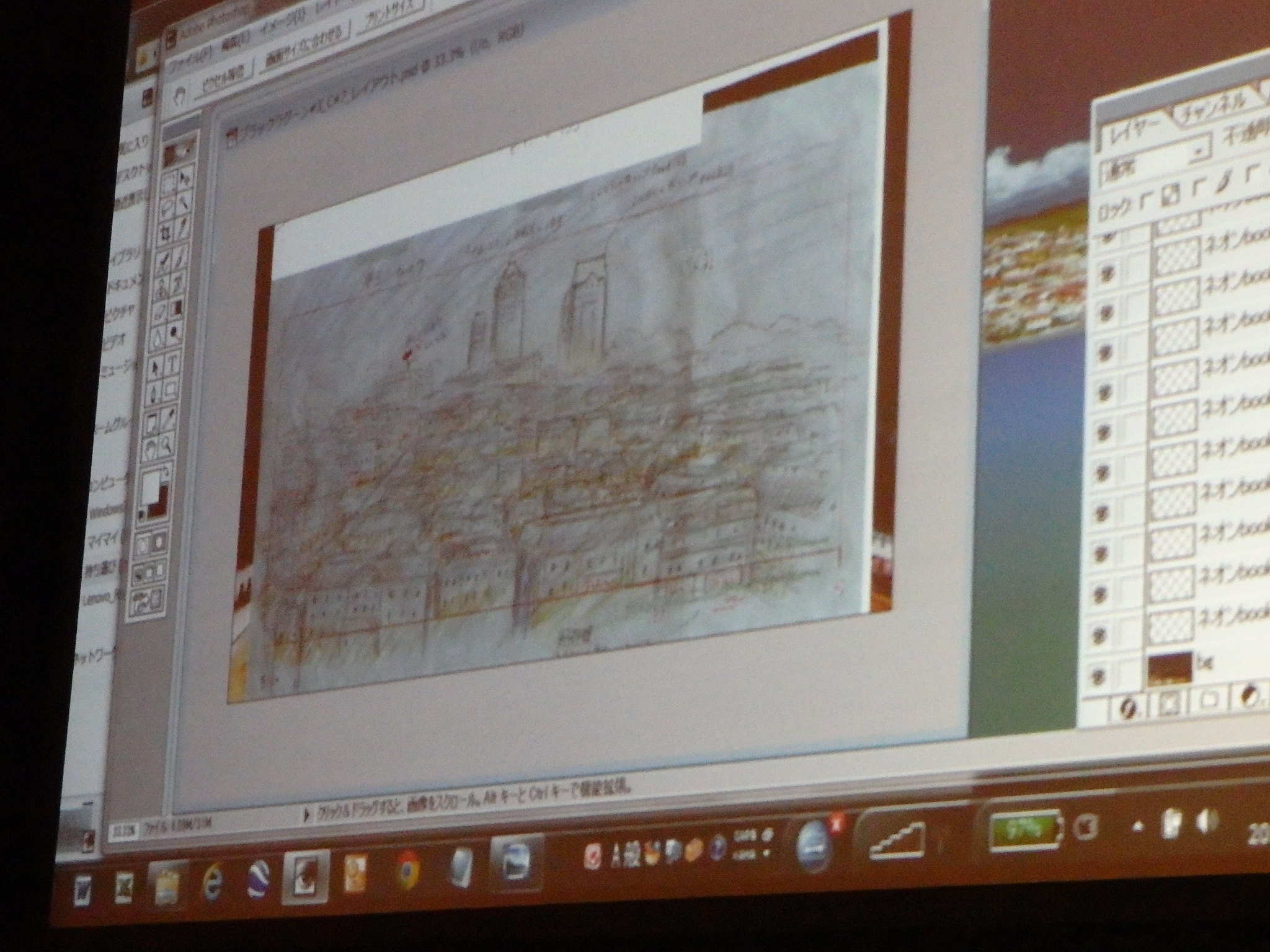
(Ani-Gamers: Evan): You’ve been talking a lot about layouts in your panel so far, and you’ve worked as both a storyboarder and a layout artist. Could you describe some of the differences between working in those two roles?
For the storyboard, you’re basically drawing out the whole episode or a whole part of the series. And while you’re doing this, you’re basically making a timeline. And for layouts, what you’re doing is basically structuring out the detail of the world in picture.
Who would you say are your inspirations? Who do you draw things from in your work as a director, as a writer?
I’m just mostly watching TV dramas these days. There’s actually dramas that play every single day in Japan. Some station by NHK does it in the morning. And there’s really excellent scriptwriters that works on these shows, so that’s where I get inspired. I’ve been watching late night dramas too, but since I’m getting old, I get sleepy at night. That’s why I wake up early and watch morning dramas. Some depiction of things are more brilliant than movies at times, so it’s a very good inspiration.
In your experiences, what are the differences you notice between fan cultures in Japan and abroad? And also, what’s a good drama I should check out?
I believe that the English community, and this is something I realized from the Mai Mai Miracle Kickstarter, is trying to build their own culture. Given that, my thought pertaining to Japanese fan culture perspective is that the Japanese are actually far behind. They’re used to being fed what they’re supposed to watch. So I think the Japanese are catching up to the English fanbase right now.
There’s NHK dramas called Amachan and Ching Toota Ching and Carnation. Those three I really recommend. Ching Toota Ching is about people who do this art called nakago in Japan. They don’t have money, but they do something like crowdfunding and achieve success. So I felt sympathy for that drama.
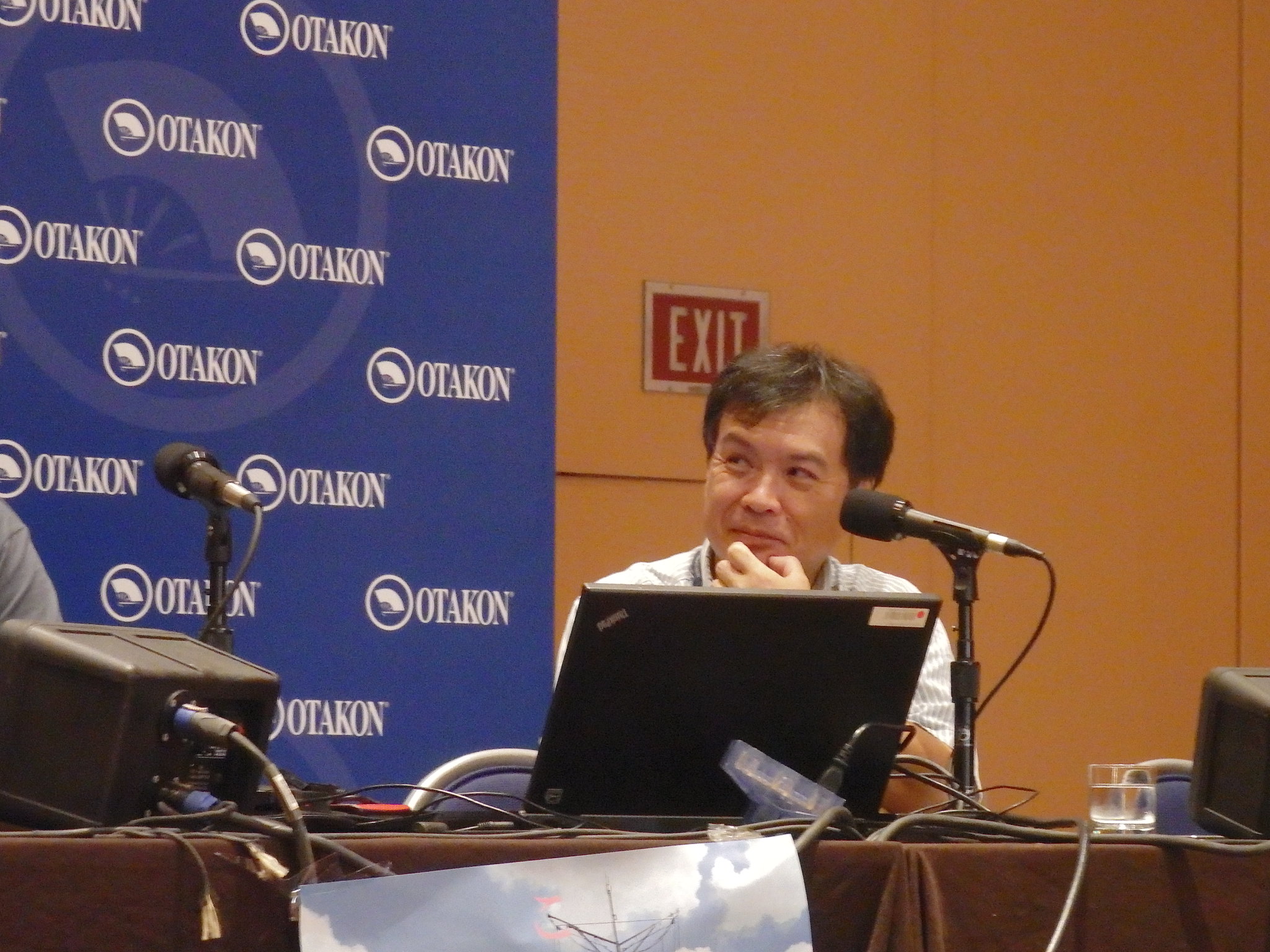
(Ani-Gamers: Ink): Given the tonal differences between the works which you handle, like Black Lagoon and Mai Mai Miracle, could you describe some of the ways that you adapt your technique to suit each individual project?
It’s kind of a mind where if you eat sweet stuff you’ll want to eat salty or sour stuff. So that’s why I want to do different things. Miyazaki, Hayao Miyazaki, actually likes types of novels like Black Lagoon, but unfortunately, he’s not allowed to make something like Black Lagoon. So I’m more unfortunate then him.
(Ani-Gamers: Ink): If I could just follow up, what are some of the directorial techniques you use to differentiate the works?
It’s not really the genre difference. I believe every project has a different face. So I try to keep a grasp of what kind of face that project has.
Can you describe your experience at Studio Ghibli, and does it still affect your work today?
Working at Ghibli was actually an extended experience from working at Telecom Studios, where Miyazaki and I were both employed first. What they really tried to do is make sure everyone grasped hold of the basics of animation. When I moved to Ghibli to work with Miyazaki once again, I was basically doing the same thing we were doing at Telecom. There were staff who got dropped out of Telecom or that wasn’t able to get into Telecom, but they were able to get into Ghibli. Some actually made it to animation director. Eventually, everyone sits in the same place if they have the same vision.
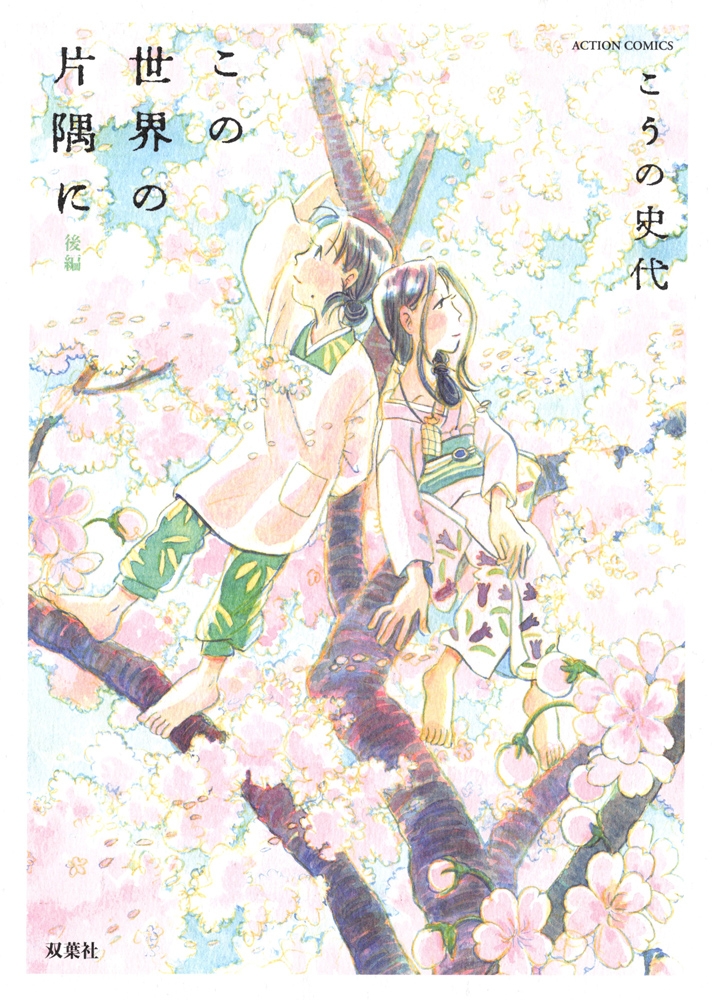
(Ani-Gamers: Evan): What drew you to adapting the work of the manga artist Fumiyo Kouno for your newest film?
As I touched on, I was depicting the 1950s Yamaguchi Prefecture with Mai Mai Miracle, but that really related to my childhood. After working on Mai Mai, I came to the realization that I could create something not based off of my childhood. So, for example, if you go 10 years back from my childhood, that’s a completely another era. So I was wondering if I could depict a story from an era I never experienced before. In Mai Mai Miracle, there was a mother, Shinko, but she actually married her husband when she was 18 years old. I was thinking, “Well maybe I might do a story of her instead.” There’s a big generation gap between 1950s and 1940s, and so if I worked on such a film, I was thinking I might be able to imagine something I never experienced before. When I was talking to the Mai Mai Miracle fans in Japan, they were mostly fans who were also fans of Fumiyo Kouno. When I talked to them about it, they all said, “Instead of doing that, there’s already a manga that’s similar to that. So you should work on that.” So I wrote a letter to Fumiyo Kouno-sensei asking if I could animate her original manga. She actually didn’t know my name, and I sent a video of Mai Mai Miracle with the letter. In her return letter, she asked me, “Were you the director who worked on Lassie?” And she really loved Lassie the animation.
I’m sure you also know of Shin Itagaki’s Teekyu, which is also made at MAPPA. Would you ever consider working on it with him?
MAPPA actually has a couple of studios now. There’s the first studio and second studio. Most of the things are going on in the first studio, and at the second studio, which is where we’re at, I think we’re completely isolated. Itagaki-san was actually in the second studio for a while, but he left to go somewhere else. So I haven’t seen him in a while.
Is it OK if I ask two questions? The first has to do with one of your early credits is Sherlock Hound. What was it like working on that show especially because it had interesting production issues? (Or so I’ve heard.)
I don’t think there were actual production issues. It’s more the legal issues we had. We started making it before the contract was closed. And so at one point, they completely shut us down. But we renegotiated afterwards, actually discussing a budget, and then we started working on it again. And when the project started up again, Miyazaki was no longer there. There was a new director. But when Miyazaki was working on it, he actually wrote so many storyboards—more than currently exist in the animation. So as staff, I really wanted to work on those episodes.
The second question has to do with Fumiyo Kouno’s work, which you’re adapting. I’ve seen that there’s some criticism of her work that it is not critical enough of the issues of that time: radiation, effects of radiation, imperialist Japan, etc. In adapting Kono Sekai no Katasumi ni, do you anticipate encountering similar issues, and are you already prepared to deal with them when they come?
If you look at the title closely, it’s In This Corner of the World. So it’s a corner of a world. It’s a huge world, but the story takes place in just this corner of the world. Making the film, I have to be aware of what the entire world is. But I must also be kept in mind that this film is about one girl’s perspective — just a normal girl’s perspective — in this corner. This work is really about one person, how she sees the war. So I think that’s the realism we’re going for. As an example: if you have a chance to look at Fumiyo Kouno’s work, most of the time she doesn’t explain what’s happening. In this frame, why is there a yo-yo? Right before this time, it’s 1964 January, that’s when the major yo-yo trend hit Japan. So what’s illustrated here is the fact that this one girl is interested in yo-yo’s because of the trend, but that entire trend in Japan is not part of the story. So this work is really strictly based on the perspective of this one girl. I think this perspective’s really critical. It’s basically touching on what one person can establish — how much can she interact with the world. So there’s many clues and hints about the world around her, but there’s no explanation; it’s really up for the viewer to interpret it or discover the surrounding world. This manga has tons of hints but no explanations, so you can find enjoyment in that too.
These are all the reference materials I gathered for making In This Corner of the World. [Shows picture of over-stuffed shelves] This is not even enough yet. Even with this much reference material and books, it’s still not enough to fully depict what’s described in the In This Corner of the World manga. And it was really hard getting all these books together too. Also, I’m running out of space to put shelves. I think the lesson is that everyone should keep a bookshelf inside their house.
Last year at Otakon, I saw a short animation directed by you named Hana wa Saku (The Flower Blooms). I tried looking for it online in the usual places: YouTube, miku miku, NHK’s website, and couldn’t find any trace of it anywhere. I finally had to find a recording someone had made of it from the NHK. Is there any reason why this is so hard to find?
This is actually a DVD sold in Japan. This one was strictly made for a charity, for the people who got hit by the tsunami, the earthquake, and 3/11. And so the royalties for us — the director, the songwriter — go to the charity; we donate it. So it’s really a harsh thing, but it’s not really to be watched freely (without payment). So if you guys could help out, if you guys are interested, if you guys could purchase one, that would be great. Hana wa Saku CD’s on sale, and the DVD comes with it.

Me and Miyazaki were both under the tutilage of Hiroshi Ikeda, who’s actually worked on such animations as The Flying Ghost Ship (Flying Phantom Ship) and Treasure Island, and there was an event Miyazaki posted about gathering up people who like this stuff. The event was really supposed to be passed on as to invite other people, such as Yasuji Mori, but it ended with Miyazaki and that’s all. At the time, I was in film school. Miyazaki was already working as a professional, but when he worked on Sherlock Hound, he was looking to work with students. And at the time, he remembered that I was still a student. This is a drawing I did when I was 21 years old for Sherlock Hound.
Have you met Fumiyo Kouno in person?
I’ve met her many times. She’s eight years younger than me, but she’s very thoughtful and energetic.
 Post-Mai Mai Miracle Screening
Post-Mai Mai Miracle Screening
This movie is based off the novel. And the original author, Nobuko Takagi-san, actually has a swirl on her forehead (a feature of the hair of the main character). So it’s basically her growing up. Now, as an adult, she is one of the judges on one of the most famous novel awards: the Akutagawa Award. What she really hoped was that when this movie was completed, she would see her friend, that long-parted friend, off of whom she based Kiiko. But unfortunately it seems they still haven’t met each other yet. One of my mentors in animation, Iko Kanada, enrolled into the same school Shinko went to. Kanada-san enrolled into the same grade as her—third year, third class—but he loved to make plastic models. And Kanada-san passed away during the summer of 2009, when this movie was completed. The house Nobuko Takagi-san lived in, so basically Shinko’s house, is inhabited by Kanada-san’s classmate. And when we went to go location hunting in Hofu City for this movie, his classmate told us many stories about Hofu. And unfortunately by then, all the wheat field that you see around Shinko’s house turned into houses. And then the resident, so the classmate of Iko-san, passed away as well. The year we revisited the location, that house was even gone. So everything is gone now, but still the shape of the mountain remains the same. And yet the remains from the pillars are still in the ground from millennia ago. When we went to go visit Hofu in 2007 for the movie, that’s when they were excavating that same house, the mansion, from the millennia ago. And now, to preserve it, they’ve buried it underground again. When I drew the mountain in this film, I tried to make it loyal to the actual shape of the mountain so people in Hofu, when they see this film, know exactly where the shot is taken from. Talking about this kind of thing really blurs the boundary of reality and fantasy. When we went to Kukuda, by that memorial stone, we made up an outdoor theater and played this movie there at night. At the end of the movie, when the kids, the two girls, are running under the Milky Way, the Milky Way in reality and the Milky Way in the movie synchronized. So it really blurred what’s real and what’s fantasy. But the story was based off of Nobuko Takagi-san’s life experience. And according to her story, she actually did find the goldfish that should’ve been dead. In animation, of course, everything is fiction, because it’s nothing of reality. But regarding the story of this film, you never know what part is fiction and what part is reality. I think a film like this is good to have.
Katabuchi Q&A #2
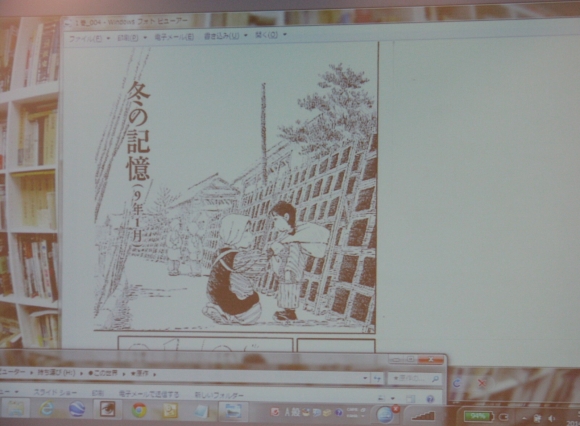
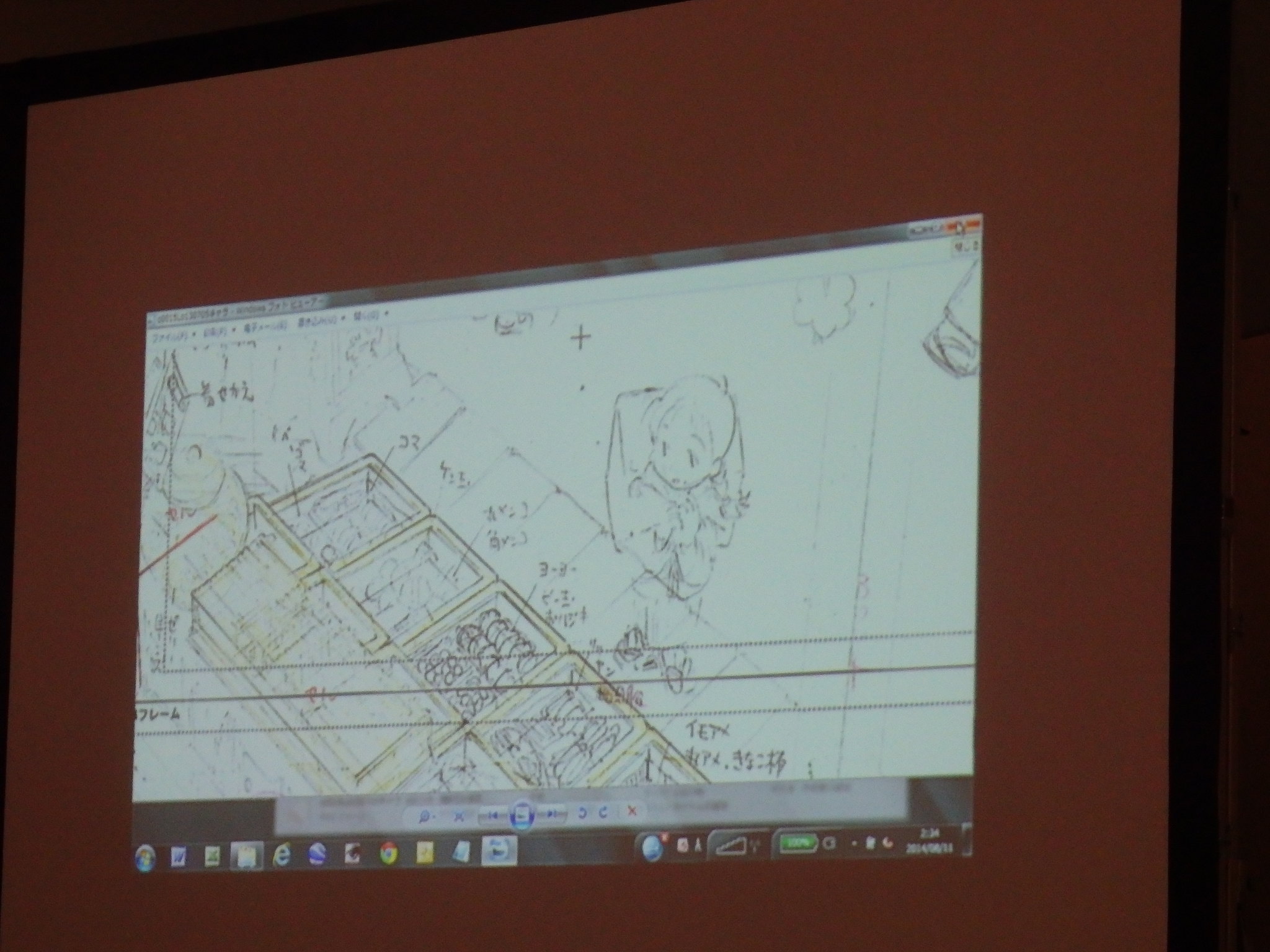
There’s nothing. (The frame shown is empty save a girl walking down a street.) There’s absolutely no information, or so it appears. But from the actions, you can see that she’s walking the street that’s now going parallel to the river. (Shows another photo.) This is an actual photo taken from the sky in 1939 at the same place we were talking about. There’s actually a date marking in the original comment that says it’s January 1934. It’s only a 5 year difference, so it’s very close to what we could see. There’s a harbor here (points), so we’re speculating that the character is basically walking along the water. So she should end up around here. (Points to another place in the photo.) You can see that there’s three houses standing right there. So what we have to do here is find photos of these three houses, somehow, and then draw the picture. When we went there, in present day, this is the house on the edge of the three houses. (Shows a picture of the house.) Based on that, we drew this. (Shows picture of the drawing of the house). In the second frame, it’s only blank. But we’ve blown it up, done research, and made the actual background. But since it was a photo we took at the present day, we have doubts; this house may be a new one. This house is located 800 km away from our studio. So we had it singled out and traveled all that distance to go check out what’s actually there. So this is the house. (Shows a picture of the house.) At the time, there was a river up to here. But now they’ve buried it. We actually took a look under the house, and it was indeed new construction. So we found out that we can’t use this photo anymore. Then we started looking for old photos. And we found this photo. (Shows the photo they found.) It’s really hard to see, but it’s still the same location. So from that photo, we re-imagined what it could have been like, and this is the picture we came up with. For the building on the right, we also looked over the aerial photo and have redrawn that one too. So it used to be a square house. But having discovered it was older architecture, we redrew this art. So what I really want to tell you guys is that all the scenes you’ll be seeing, or you see in the art gallery for In This Corner of the World, we’re basing off of something that actually existed in 1950. The original manga author, Fumiyo Kono, was born in this town around this time. To me, it’s another foreign land that’s 800 km away. When I first opened this book up, I see this little girl Suzu. She’s just walking around, and I had no clue where she was walking. And there’s only little bits of hints put into the manga that would specify where this actually was. So we kept looking for more photo references at the time so we could make the actual setting.
In this frame, this is the exact picture of what you would have seen at that time. From this photo, you could actually find out that this was Hiroshima. And the court, if you go down the street, has tons of stores. If you go down to the edge, the deeper end of it, there’s actually a bridge. We only know about this, you can’t tell by the photo, because we actually went there and discovered it. There’s a crank and there’s a bridge, after that, there’s a bridge. And on the left side, towards the bridge, there’s a hospital. Right above this hospital, about 500 m above, that’s exactly where the Hiroshima bomb exploded. So that’s the exact location of where this picture was taken. Now it’s just Hiroshima Peace Park. There’s a very beautiful lawn that’s spread across the park. When I started looking up these kind of things, I thought it must be important, for the people in Hiroshima, to depict the town they used to live in as closely as possible.
Suzu’s lost here and is wandering around. I did say everything was gone, but there’s actually one place that remains. This part does not specify where the location is, but I thought that if the remaining building, if I place it in here in the past, this version of the past, then I believe that people in the present could actually visit the park and imagine where Suzu was walking. The only building remaining after this long is this building. This building is only 170 m away from ground zero, but it was built in 1929. And not only are they still using this building, but the second story is used by the Hiroshima Film Commission. So we decided to make Suzu wader around or get lost in front of this building. It might be hard to see on the screen right there, but Suzu’s actually somewhere along there. So the second story of this building in present day is now Hiroshima Film Commission, and in the first story, there’s actually a store, just a vending store, for the department. We looked it up, and it used to be a department store that sells kimono. It used to have children over there, and the store clerk’s wearing something called a happi. There’s actually one happi left from that time. So basically, I wanted to put this building inside the film, because I wanted people to realize that the pictures they’re seeing on screen are somehow connected to the real world.
The building we saw is too big to be put into the animation, because it currently looks like this. (Shows scale drawing of building in film layout.) It looks larger than in real life. So in the film, I wanted to give the impression. And in doing this, we had one problem: the one building that’s closer would come into camera too. But this store no longer exists, of course, and there’s no photo of it from that time. The only way to really figure out what it looked like was to ask the people who lived there at the time. Not everyone died in this town. There were kids, elementary schoolers, who evacuated from town before the bomb. So they came back to this town after that. So we heard their stories about the store, and they mention that the store used to be a store called Taishoya, a Taisho clothing (kimono) store. There actually used to be a railing here that kids used to sit on. It was all made out of brass, so it was glittering this gold color. People told us that there was another store in front, which was a cloth store, and they told us that this store also had a golden railing. So we asked many people about this, but it’s based on the memory from 70 years ago, so of course each person remembers it differently.
Based on each person’s memories, we hear different pictures. So the sign on the store could’ve had light bulbs, or it could’ve even had phone numbers on it. And we were told that the sign was colored in black, so we tried coloring it this way. There isn’t actually any photos remaining of that particular store, but here (he points to the screen) you can see the sign. Here, you can tell that the sign is not black. It’s this vertical sign that’s the black one. We re-colored it this time and made it this color. We were told that there was a store with windows here. (Points) The son of this store actually survived the war but unfortunately passed away January of this year … so before we could interview him. But we found out that the daughter of the store next to this one is still alive. She emailed me while I was on the plane to Otakon. She looked at the picture and told me that there was only one window and that, since it was clothing store, there was not a mannequin inside but fabric. So she was telling me that it was bringing back memories of when she used to go play nextdoor; they used to grill tangerines at the back of the store. She talked to me a lot about her childhood. In this letter, she talked a lot about that time when Suzu was alive, or would’ve been alive if she was actually there. So just by looking at these few samples, you can tell that there’s so much to the world of In This Corner of the World that’s not actually illustrated in the original manga. There’s the entire world, and she lives only in this corner of the world. So as filmmakers, we must grasp hold of her entire world.
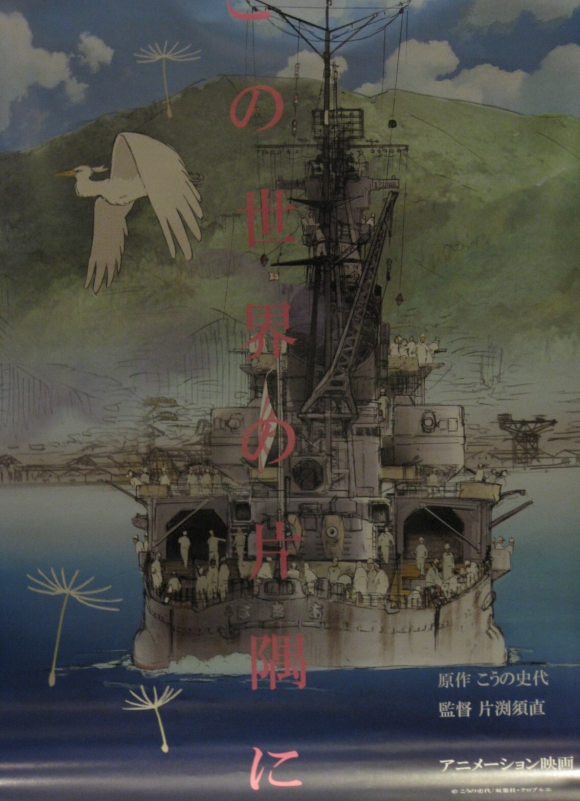
In this scene, Suzu is looking at a cloud from an airplane. In fact, I actually know which plane, which exact plane, this plane was flying overhead. So the date in the manga is April 6, 1945. And there’s actually one record of one plane that’s flying over this town. This point in time. There’s also a scene where’s Suzu is walking in snow. But from that fact, we can already tell that Suzu is walking on February 25, 1945; that’s the exact date when all of Japan had heavy snow. Suzu is a fictional character Fumiyo Kouno has made up, but the world around her uses every single detail of the real world as a reference. That’s how the author built this world, so my mission as director is to research all of that.
What’s the difference between producing TV shows versus movies?
It’s difficult to get a green light. Even if unpopular, TV shows might get re-broadcast. Japanese box office system decides how entire release will do upon first weekend. This reflected badly for Mai Mai Miracle, which had enough budget for production but not promotion. Consequently, attendance suffered. The film crew thusly became the street team and turned things around but too late. People were packing theaters, but the contract was already cancelled. We did find theaters after that which would play the movie for the entire year, and that led to the DVD release.
How long did the research take?
Research began in August of 2010.
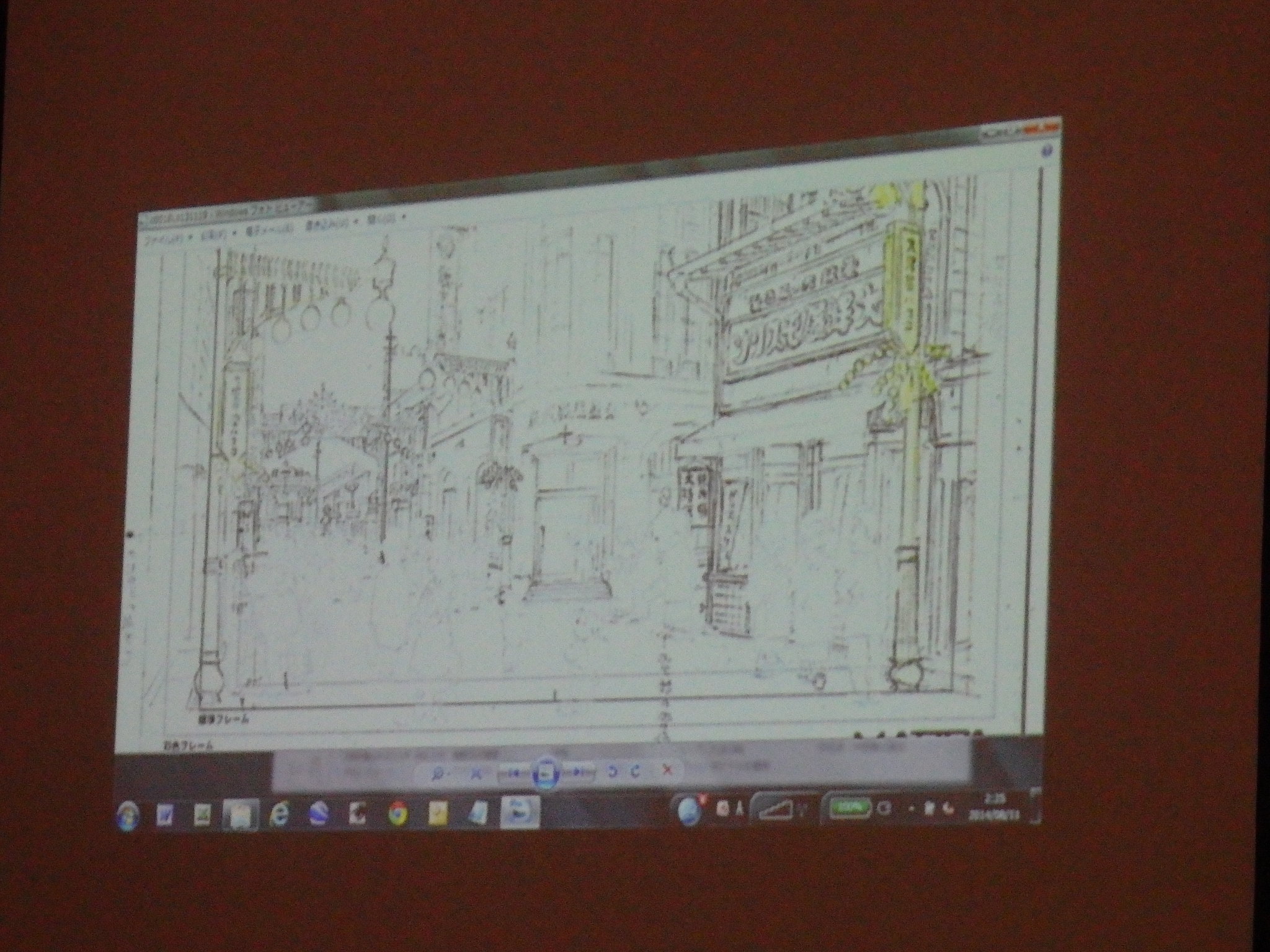
(Ani-Gamers: Ink): What are the sources for the reference materials in that bookcase, and, in the case of interviews with Hiroshima residents, what were their reactions to why you were interviewing them?
Japan’s used book stores have network connection. First, I’d find a book and study on my own as accessing the Hiroshima archives was not an option. There’s also a network of the children survivors of Hiroshima that’s directed by a teacher, and he introduced people to us. Otherwise individuals might not have responded.
Click here for more coverage of Otakon 2014.


